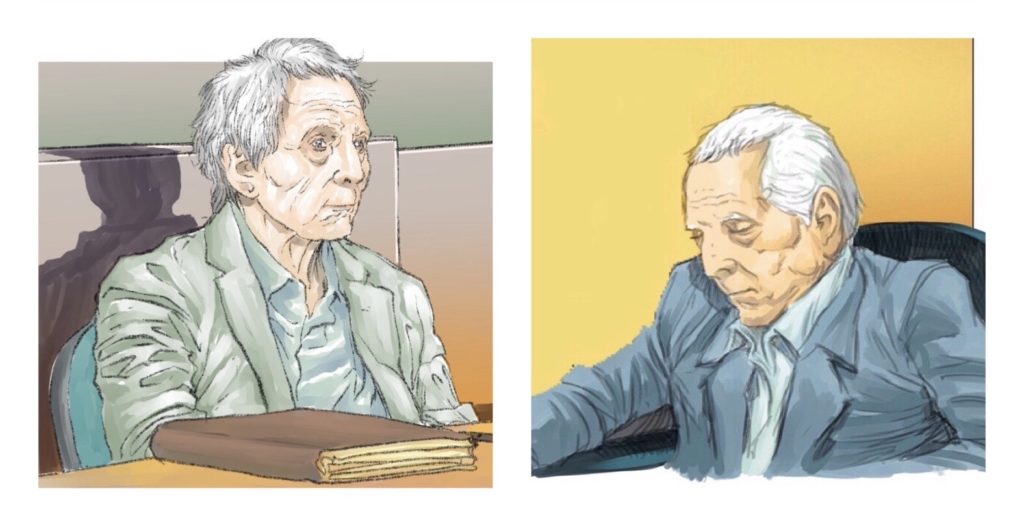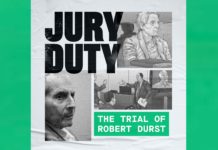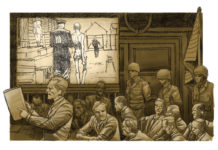This week at crimestory.com Amanda Knox and Christopher Robinson examined a piece of pop culture that has hit the zeitgeist and also continued their series of interviews on Exoneration and Incarceration in a Time of Pandemic. And we presented another story on testimony given in the trial of Robert Durst.

On Monday, we published Amanda Knox on Tiger King: The Rush to Judgement of Carole Baskin. In the piece, Amanda weighs in on Netfilx’s documentary series phenomenon Tiger King, suggesting that the treatment of Carole Baskin is “not only unsatisfying but unfair,” and is best encapsulated in a viral TikTok video parody, featuring the lyrics: “Carole Baskin killed her husband, wacked him. Can’t convince me that it didn’t happen. Fed him to tigers, they snacking. What’s happening.” Later in the piece Knox suggests new fairer lyrics for the parody and offers a link to her own TikTok video with those lyrics.

On Wednesday, we presented an exclusive interview between Amanda and Heidi Goodwin, who served a full 10 year sentence for assault and then had her conviction vacated when her attorneys and experts successfully debunked the science upon which that conviction was based.

On Friday, we presented an enhancement to a piece we published on Monday by Chris Tarricone with the revised title The Pack of Canines in the Trial of Robert Durst. In the piece, Chris offers us another impressionistic account of testimony delivered in the trial of Robert Durst for the murder of Susan Berman, before that trial was inerrupted by the COVID-19 crisis.

Also related to the Durst Trial this week, Crime Story received an email from witness Thomas Durst which said:
I am Robert Durst’s brother, Thomas. I appreciate the crimestory.com post regarding my testimony at his trial on March 11, 2020.
You can read the story of Thomas Durst’s testimony here.
For those of you wondering how you can catch up on previous Crime Story newsletters, just click here and your question shall be answered.
As is our new custom, we present a summary of Hannah Teich’s curated selection of some of the more interesting stories from Crime Story Daily over the past week. (In order to get to the full essay and the story links, please click through this link to Hannah’s piece at crimestory.com.)
On the criminal justice policy front: NPR reports from Florida, where a contentious federal trial over felony disenfranchisement began this week. A piece from the New York Times focuses on the logistics of the trial, which is happening primarily over video chat. And an interesting piece from the Atlantic questions the possible impacts of quarantine on future debates over criminal justice reform.
In muckraker/watchdog reporting: A piece from the Marshall Project tracks the spread of the coronavirus in prisons and jails around the country. The Daily podcast interviews an inmate infected with the virus at New York’s Rikers Island prison complex. A piece from The City also focuses on NYC’s prisons and jails, where some 3,800 people are still incarcerated and almost 400 have tested positive for the virus. And a New York Times editorial calls on prisons and elected officials to take action to protect the incarcerated.
In complex crime storytelling: A piece from the New Republic focuses on the case of Ramon Ward, who was recently exonerated after 25 years in prison thanks to the work of a conviction integrity unit. And the Intercept recounts the extraordinary story of Jerry Givens, Virginia’s “executioner-turned-abolitionist.”
And in culture/true crime: A piece by writer and curator Nicole Fleetwood in the New York Review of Books focuses on “art in the age of mass incarceration.” And the New York Times reviews “Murder to Mercy,” Netflix’s new documentary about Cyntoia Brown.
Again, you can click here to go to Hannah’s weekly essay and find links to those articles.
Thanks for reading and listening.
Kary Antholis
Publisher/Editor, Crime Story






